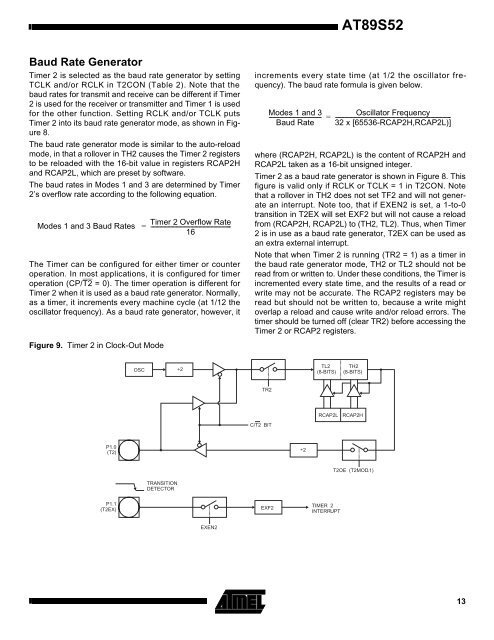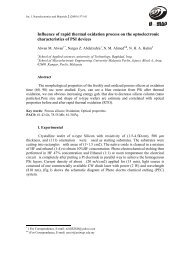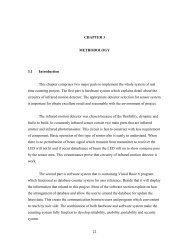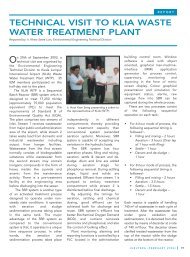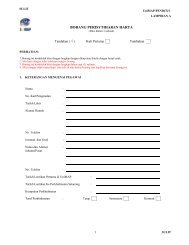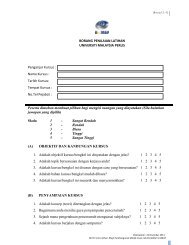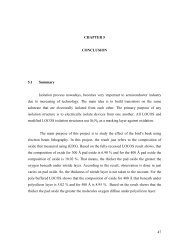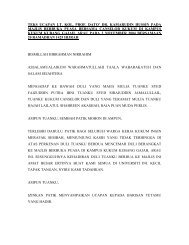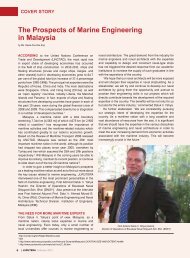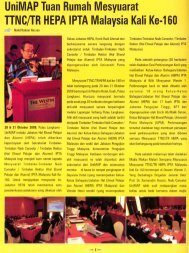CHAPTER 3 METHODOLOGY 3.1 Overview The Water Monitoring ...
CHAPTER 3 METHODOLOGY 3.1 Overview The Water Monitoring ...
CHAPTER 3 METHODOLOGY 3.1 Overview The Water Monitoring ...
You also want an ePaper? Increase the reach of your titles
YUMPU automatically turns print PDFs into web optimized ePapers that Google loves.
AT89S52Baud Rate GeneratorTimer 2 is selected as the baud rate generator by settingTCLK and/or RCLK in T2CON (Table 2). Note that thebaud rates for transmit and receive can be different if Timer2 is used for the receiver or transmitter and Timer 1 is usedfor the other function. Setting RCLK and/or TCLK putsTimer 2 into its baud rate generator mode, as shown in Figure8.<strong>The</strong> baud rate generator mode is similar to the auto-reloadmode, in that a rollover in TH2 causes the Timer 2 registersto be reloaded with the 16-bit value in registers RCAP2Hand RCAP2L, which are preset by software.<strong>The</strong> baud rates in Modes 1 and 3 are determined by Timer2’s overflow rate according to the following equation.Modes 1 and 3 Baud Rates<strong>The</strong> Timer can be configured for either timer or counteroperation. In most applications, it is configured for timeroperation (CP/T2 = 0). <strong>The</strong> timer operation is different forTimer 2 when it is used as a baud rate generator. Normally,as a timer, it increments every machine cycle (at 1/12 theoscillator frequency). As a baud rate generator, however, it=Timer 2 Overflow Rate-----------------------------------------------------------16increments every state time (at 1/2 the oscillator frequency).<strong>The</strong> baud rate formula is given below.Modes 1 and 3--------------------------------------Baud Rate=Oscillator Frequency-------------------------------------------------------------------------------------32 x [65536-RCAP2H,RCAP2L)]where (RCAP2H, RCAP2L) is the content of RCAP2H andRCAP2L taken as a 16-bit unsigned integer.Timer 2 as a baud rate generator is shown in Figure 8. Thisfigure is valid only if RCLK or TCLK = 1 in T2CON. Notethat a rollover in TH2 does not set TF2 and will not generatean interrupt. Note too, that if EXEN2 is set, a 1-to-0transition in T2EX will set EXF2 but will not cause a reloadfrom (RCAP2H, RCAP2L) to (TH2, TL2). Thus, when Timer2 is in use as a baud rate generator, T2EX can be used asan extra external interrupt.Note that when Timer 2 is running (TR2 = 1) as a timer inthe baud rate generator mode, TH2 or TL2 should not beread from or written to. Under these conditions, the Timer isincremented every state time, and the results of a read orwrite may not be accurate. <strong>The</strong> RCAP2 registers may beread but should not be written to, because a write mightoverlap a reload and cause write and/or reload errors. <strong>The</strong>timer should be turned off (clear TR2) before accessing theTimer 2 or RCAP2 registers.Figure 9. Timer 2 in Clock-Out ModeOSC÷2TL2(8-BITS)TH2(8-BITS)TR2RCAP2LRCAP2HC/T2 BITP1.0(T2)÷2T2OE (T2MOD.1)TRANSITIONDETECTORP1.1(T2EX)EXF2TIMER 2INTERRUPTEXEN213


